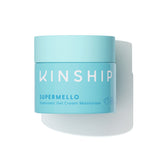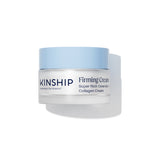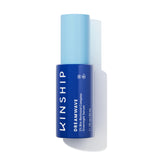Keeping your face moisturized is one of the simplest yet most vital steps in maintaining healthy, happy skin.
Proper moisturizing can help boost your appearance, protect your skin from dryness and environmental stressors, and leave you with glowing skin.
As crucial as moisturizing is, though, not everyone is familiar with the proper way to do it. Not to mention how some may not know what face moisturizer to include in their skincare routine.
In this guide, you will learn the most effective methods of moisturizing your face. We will also help you find the perfect moisturizer for your skin type, whether it is a natural remedy or a store-bought product.

Why Moisturizing Your Face Is Essential
Moisturizing your face is key to keeping your skin healthy and youthful-looking. A well-moisturized face also has a strong barrier that protects it from dryness, irritation, and outside elements like pollution or harsh weather.
Moisturizers work by sealing in hydration and preventing moisture loss. They ensure your skin retains the water it needs to stay soft, plump, and smooth.
Over time, consistent moisturizing can help reduce fine lines, improve elasticity, and give your face a fresh, healthy glow.
When you skip this step, your skin can quickly become flaky, dull, or prone to premature aging.
In some cases, dehydrated or dry skin can even trigger breakouts because your body overcompensates by producing excess oil.
Adding a moisturizer to your daily routine is a small but powerful step that can make all the difference.
Recommended Products
Choosing the Right Moisturizer for Your Skin Type
Have you ever wondered, 'What can I use to moisturize my face?' The answer depends entirely on your skin type, which dictates what ingredients work best on your face.
For example, if you have sensitive skin, the Supermello Gel Cream Moisturizer is a fantastic option for achieving balanced, hydrated, and happy skin. It contains Hyaluronic acid, an ingredient known for its soothing qualities.
On the other hand, if you have oily, acne-prone skin, you may want to consider using a lightweight moisturizer since heavier formulas may clog your pores, leading to more breakouts.
Identifying your skin type and familiarizing yourself with moisturizer formulas can help you find the right product. This can lead to a skincare routine that allows you to achieve balanced, hydrated, and happy skin.
When in doubt, you can also check the ingredient labels when shopping, and for ongoing concerns, consult a dermatologist for advice.
Oily Skin
Oily skin produces extra sebum, which, if not managed properly, can leave the face looking shiny and cause clogged pores.
The key to moisturizing oily skin is using lightweight, non-comedogenic, and gel-based formulas.
Look for ingredients like hyaluronic acid and niacinamide because these are two powerhouses known for moisturizing oily skin. Hyaluronic acid delivers hydration without clogging pores, while niacinamide helps balance oil production and reduce inflammation.
For a reliable, proven moisturizer, try the Super Rich Ceramide + Collagen Firming Cream, which hydrates without weighing down oily skin.

Dry Skin
If you have been wondering why your skin is so dry even when you moisturize, it may be due to an impaired skin barrier or using the wrong products.
Dry skin lacks the ability to retain water, which weakens its protective barrier.
Those with dry skin benefit greatly from rich creams and ointments containing hydrating ingredients like hyaluronic acid, glycerin, and ceramides. These ingredients attract moisture, lock it in, and repair the skin’s barrier.
Once you have found the right product, apply it on slightly damp skin as it seals in extra hydration, making this process highly effective in moisturizing your skin.
Additionally, consistent use of deeply hydrating products can help soothe dry skin, replenish its nutrients, and leave it feeling soft and plump.

Combination Skin
Combination skin entails a mix of oily and dry areas, such as having an oily T-zone (forehead, nose, and chin) and drier cheeks.
This skin type requires a carefully balanced moisturizer, one that hydrates the dry areas without adding shine to the oily zones.
Keep in mind, though, that other skincare products, such as toner, can help with combination skin. This is why understanding the difference between toner and moisturizer is a must when creating a routine.
While a toner preps your skin by removing excess oil and balancing pH levels, a moisturizer provides the necessary hydration to keep your skin smooth and nourished.
If you want to add moisturizer to your routine, consider lightweight gel-cream formulas. They effectively hydrate the skin without weighing it down.
You can also customize your routine by applying a richer cream to drier areas and a lighter moisturizer to the T-zone.
As always, testing products and observing how your skin reacts can help you strike the perfect balance.
Sensitive Skin
Sensitive skin is more prone to irritation, redness, and adverse reactions to certain products or ingredients, so it’s imperative to choose the right moisturizer to avoid flare-ups and itchy skin.
Look for fragrance-free, hypoallergenic formulas with soothing ingredients like aloe vera, chamomile, or colloidal oatmeal. These ingredients calm inflammation and nourish the skin barrier.
Additionally, always patch-test new products before applying moisturizers to your face. This ensures the moisturizer works for your skin without causing discomfort.
Common Ingredients in Effective Moisturizers
The amount of moisturizer you apply and your consistency in using it can impact skin hydration and the overall effectiveness of the product.
In addition, understanding how ingredients affect specific skin types can help you make better skincare choices, thus improving your chances of getting noticeable results.
Here are some key ingredients found in moisturizers:
Hyaluronic Acid
Hyaluronic acid is often celebrated as a hydration hero. This powerful humectant attracts moisture from the air and pulls it deep into your skin, ensuring it stays plump, smooth, and well-hydrated.
Not only that, but its lightweight, non-greasy texture makes it a versatile choice for all skin types.
If you have dry and aging skin, hyaluronic acid can help you deal with dehydration while fighting fine lines. On the other hand, oily or combination skin benefits from this ingredient because it provides essential moisture without feeling heavy.
With its ability to deliver long-lasting hydration, hyaluronic acid is a cornerstone of modern skincare.
Glycerin
Glycerin is another vital humectant that helps maintain soft, supple skin. It prevents dehydration and dryness by drawing moisture to the skin and locking it in.
This ingredient is found in both affordable and luxury moisturizers, highlighting its versatility and widespread appeal.
Additionally, glycerin is suitable for all skin types and creates a refreshed and smooth complexion, helping your skin stay balanced and healthy. Its accessibility and effectiveness make it a staple in any well-formulated moisturizer.
Ceramides
Ceramides are essential lips that act as the glue holding your skin barrier together. When the skin’s ceramide levels drop, it becomes dry, irritated, and more vulnerable to damage.
To prevent this from happening, consider using ceramide-rich moisturizers, like the Super Rich Ceramide + Collagen Firming Cream. This product replenishes natural lipids in the skin, ensuring it stays strong and hydrated for years to come.
It is also worth noting that ceramide's benefits are especially significant for sensitive or eczema-prone skin, which requires constant barrier repair for comfort and protection.
Vitamin E
Vitamin E is a multi-tasking antioxidant that shields your skin from environmental stressors such as pollution and UV damage.
It is a common skincare ingredient known for its soothing and hydrating properties, making it a popular choice for those with dry and sensitive skin.
Its soothing and hydrating properties make it particularly beneficial for dry and sensitive skin, calming irritation while boosting hydration.
Over time, continued use of Vitamin E improves skin elasticity and softness, thus promoting a healthier, more youthful complexion.
By defending against external aggressors and nourishing deeply, Vitamin E ensures your skin looks and feels its best.
How to Apply Moisturizer Correctly

Even the best moisturizer will not work effectively if it is not applied correctly. Follow these simple steps to get the most out of your product:
- Cleanse your face with a gentle cleanser to remove dirt, oil, and impurities.
- Pat your skin dry gently with a soft towel, leaving it slightly damp. Moisturizer works best when applied to damp skin.
- Warm a small amount of moisturizer between your fingertips.
- Gently massage the product into your skin using upward strokes. Focus on areas prone to dryness, like your cheeks and forehead.
- Allow the moisturizer to absorb fully before applying sunscreen (in the morning) or treatments like retinol at night.
- Repeat this process twice daily for consistently hydrated, healthy skin.
Natural Alternatives to Store-Bought Moisturizers
If you prefer natural moisturizers, here are some effective alternatives:
- Coconut oil: Offers deep hydration for very dry skin
- Aloe vera gel: Soothes and hydrates sensitive or inflamed skin
- Shea butter: Nourishes and repairs rough, flaky areas
- Honey: A natural humectant that draws moisture into the skin
- Jojoba oil: Balances natural oil production and mimics the skin’s natural sebum
Use these ingredients sparingly and always perform a patch test first to avoid irritation.
Daytime vs. Nighttime Moisturizing

Although daytime and nighttime moisturizers may seem similar, they are designed to meet your skin’s unique needs at different times of the day.
Think of daytime moisturizing as protecting and prepping your skin for the day ahead, while nighttime moisturizing focuses on repair and renewal while you rest.
Day creams are lightweight and absorb quickly, ensuring your skin stays comfortable without feeling greasy. Additionally, many daytime moisturizers include SPF to protect your skin from harmful UV rays.
Night creams, on the other hand, are richer and more nourishing. While you sleep, your skin works to repair itself, and nighttime moisturizers support this natural process.
Using the right product at the right time allows you to address your skin’s specific needs both day and night. Incorporating both into your routine ensures your skin gets round-the-clock care for a healthy, radiant glow.
FAQs (Frequently Asked Questions)
Can I Use Body Lotion on My Face?
Body lotion is not ideal for your face because it is often thicker and contains fragrances or oils that may clog pores.
Facial skin is more delicate and requires products specifically designed for it. Stick to facial moisturizers to avoid irritation and breakouts.
Is It Okay to Skip Moisturizer If I Have Oily Skin?
No, skipping moisturizer can worsen oily skin. When your skin lacks moisture, it produces even more oil to compensate.
Use a lightweight, oil-free moisturizer to keep your skin balanced and hydrated without adding shine.
How Can I Tell If a Moisturizer Is Not Working for Me?
Signs of an unsuitable moisturizer include redness, irritation, breakouts, or a tight, uncomfortable feeling.
If your skin does not improve or feels worse, discontinue use and try a product better suited to your skin type.
Conclusion on What Can I Use to Moisturize My Face
Moisturizing your face is an essential part of any skincare routine. It helps maintain healthy, glowing skin while addressing concerns like dryness, oiliness, or sensitivity.
If you are still wondering, ‘What can I use to moisturize my face?’ The answer depends on your skin’s unique needs.
Consider your skin type and concerns and check for the key ingredients that can help you address these issues. With the right product and consistent care, you can enjoy healthy, glowing skin every day.
Take the time to care for your skin, and you will be rewarded with a soft, radiant complexion that looks and feels its best.
Ready to upgrade your skincare routine? Explore proven skincare solutions at Kinship.



